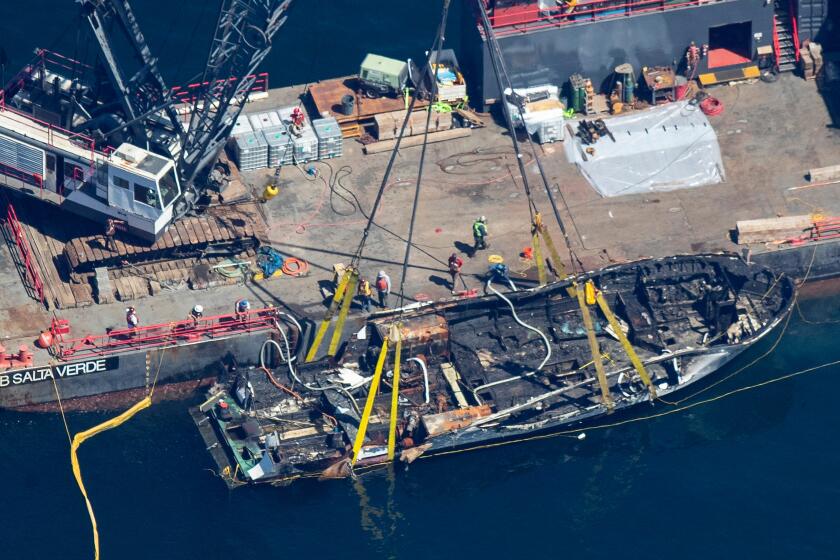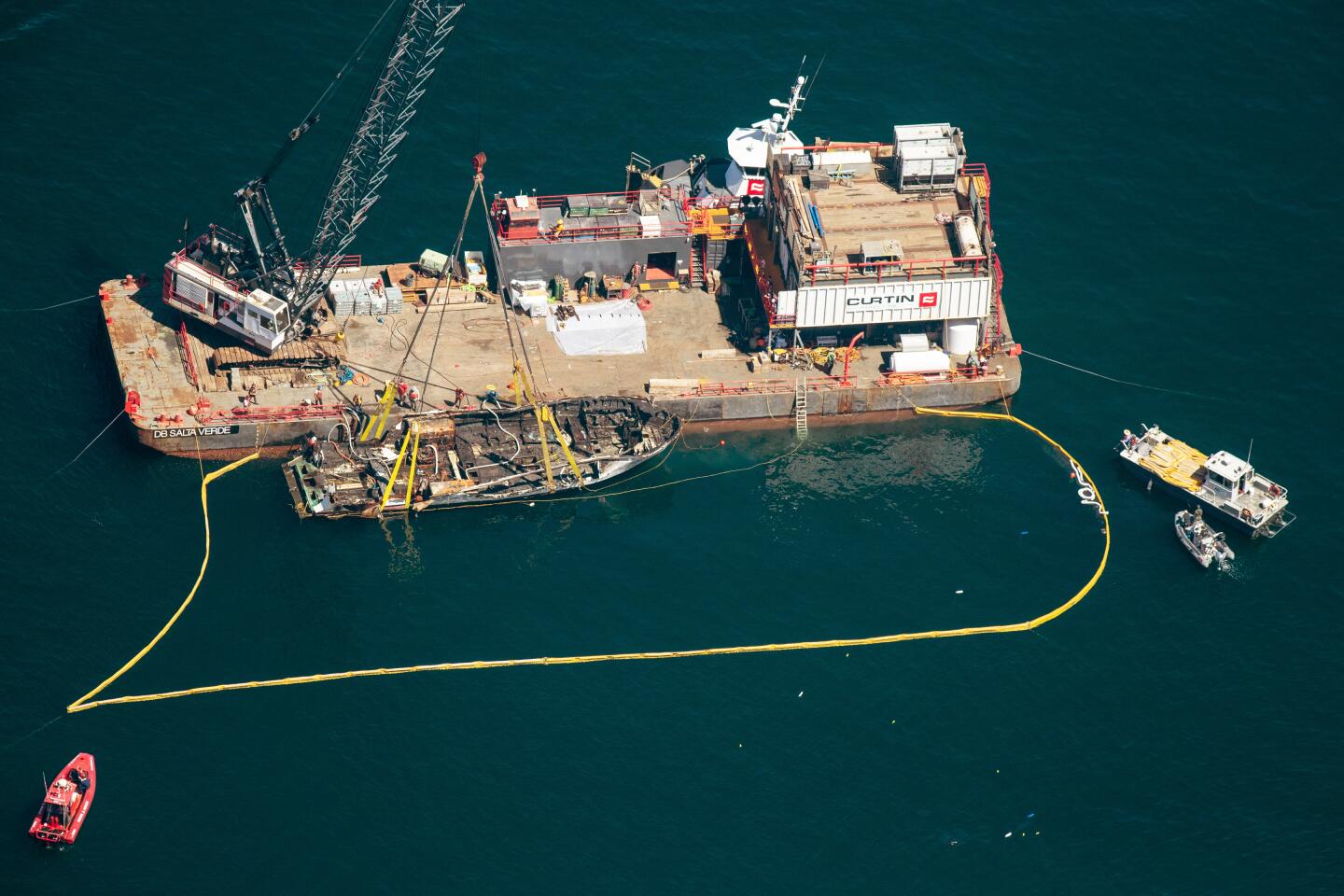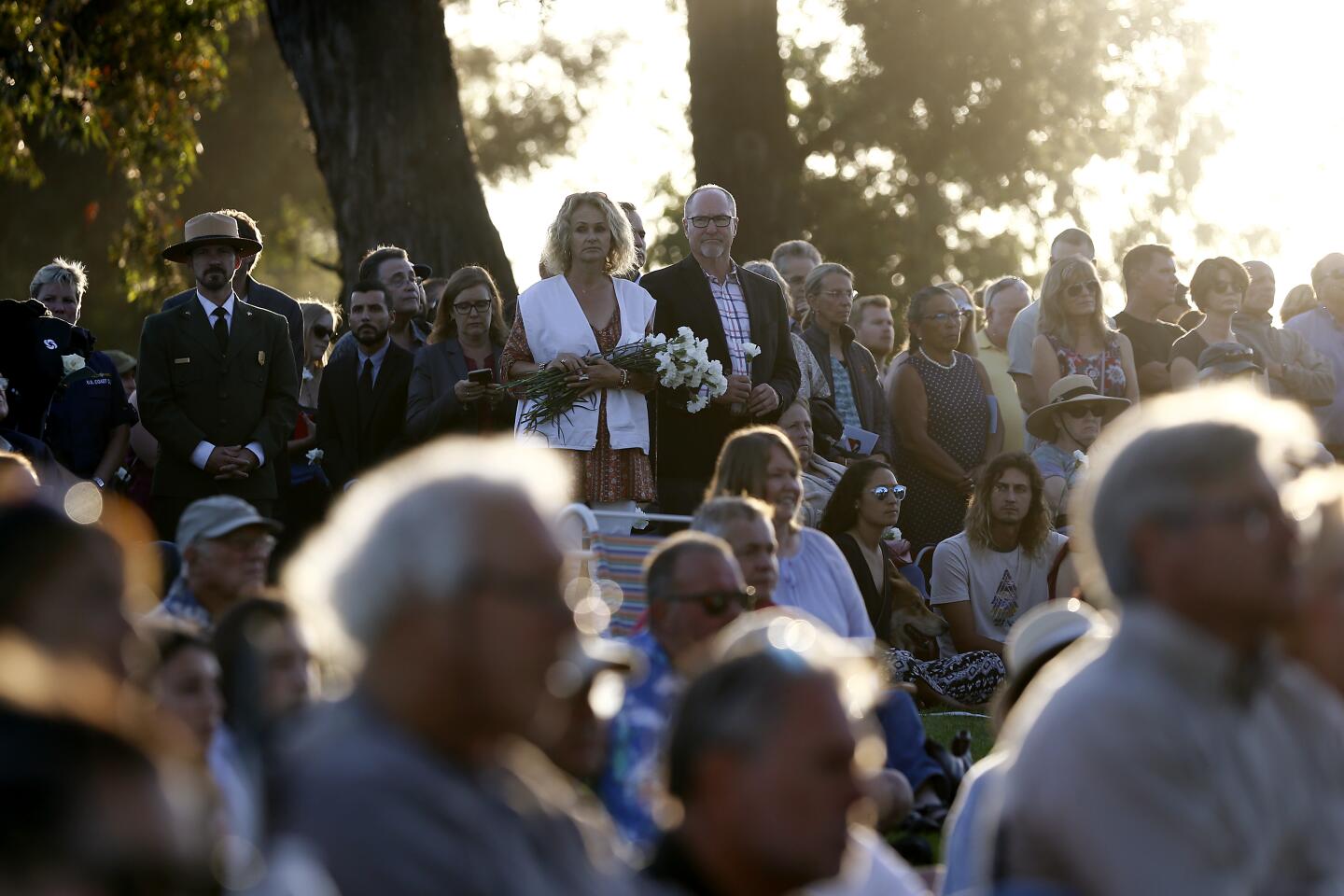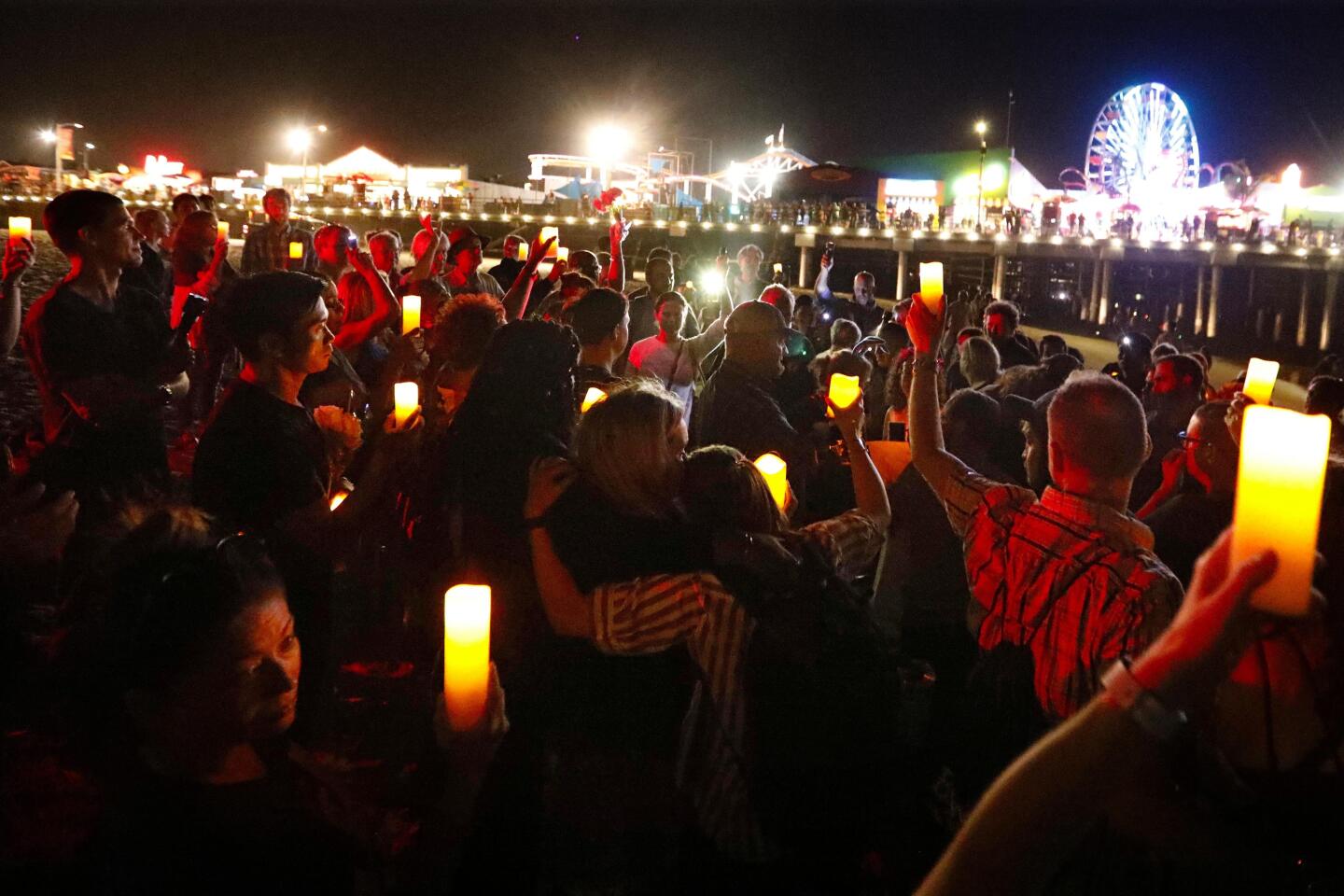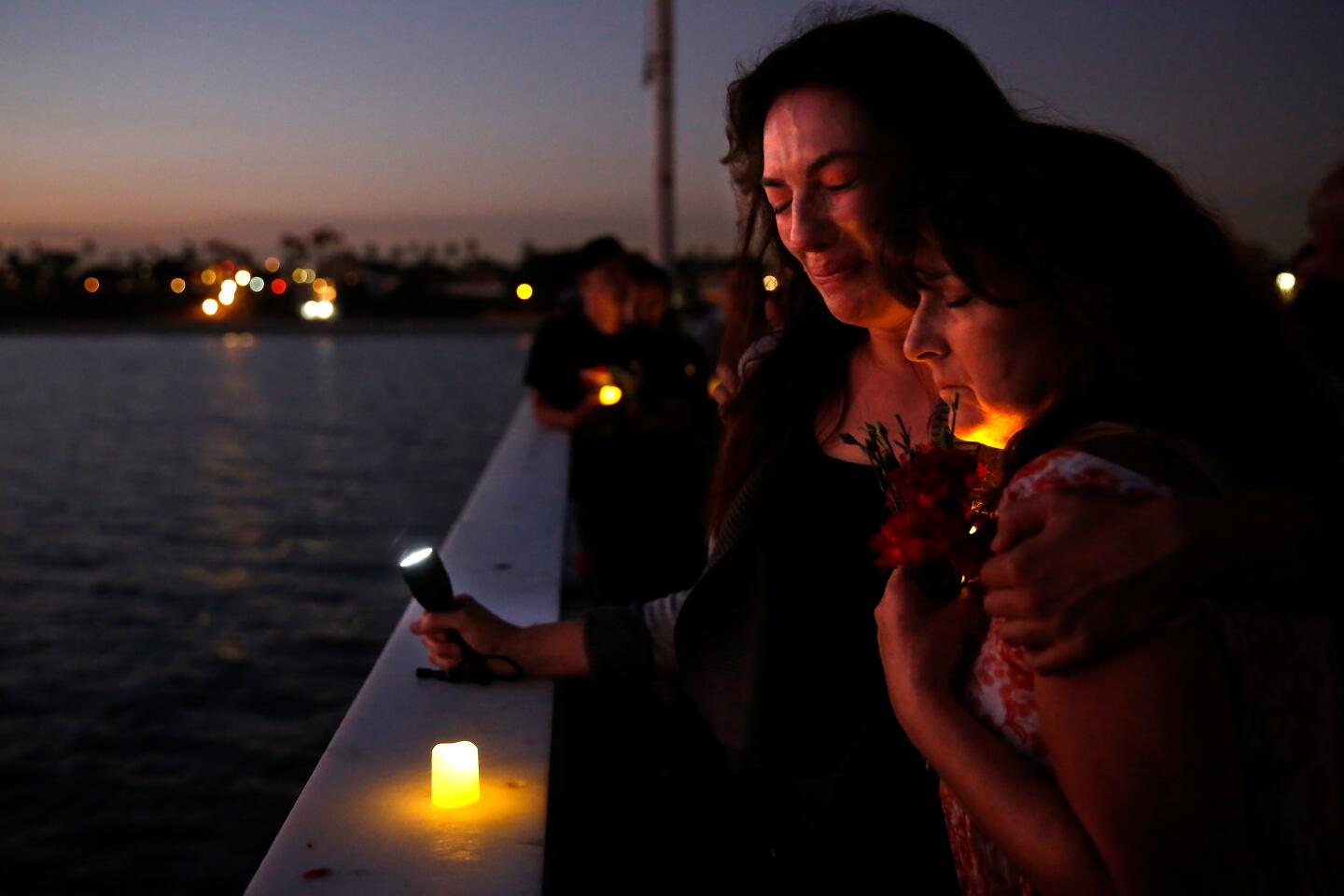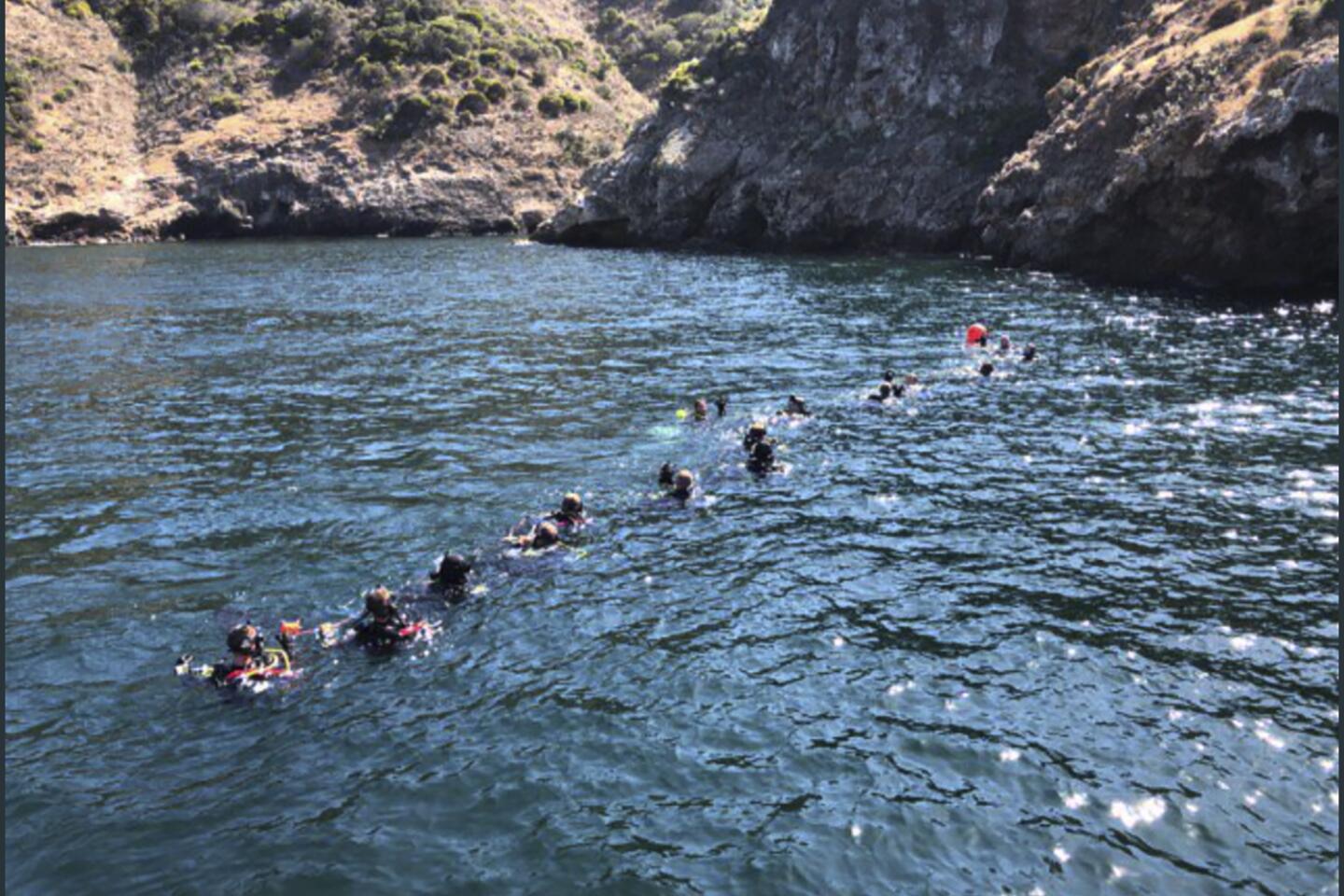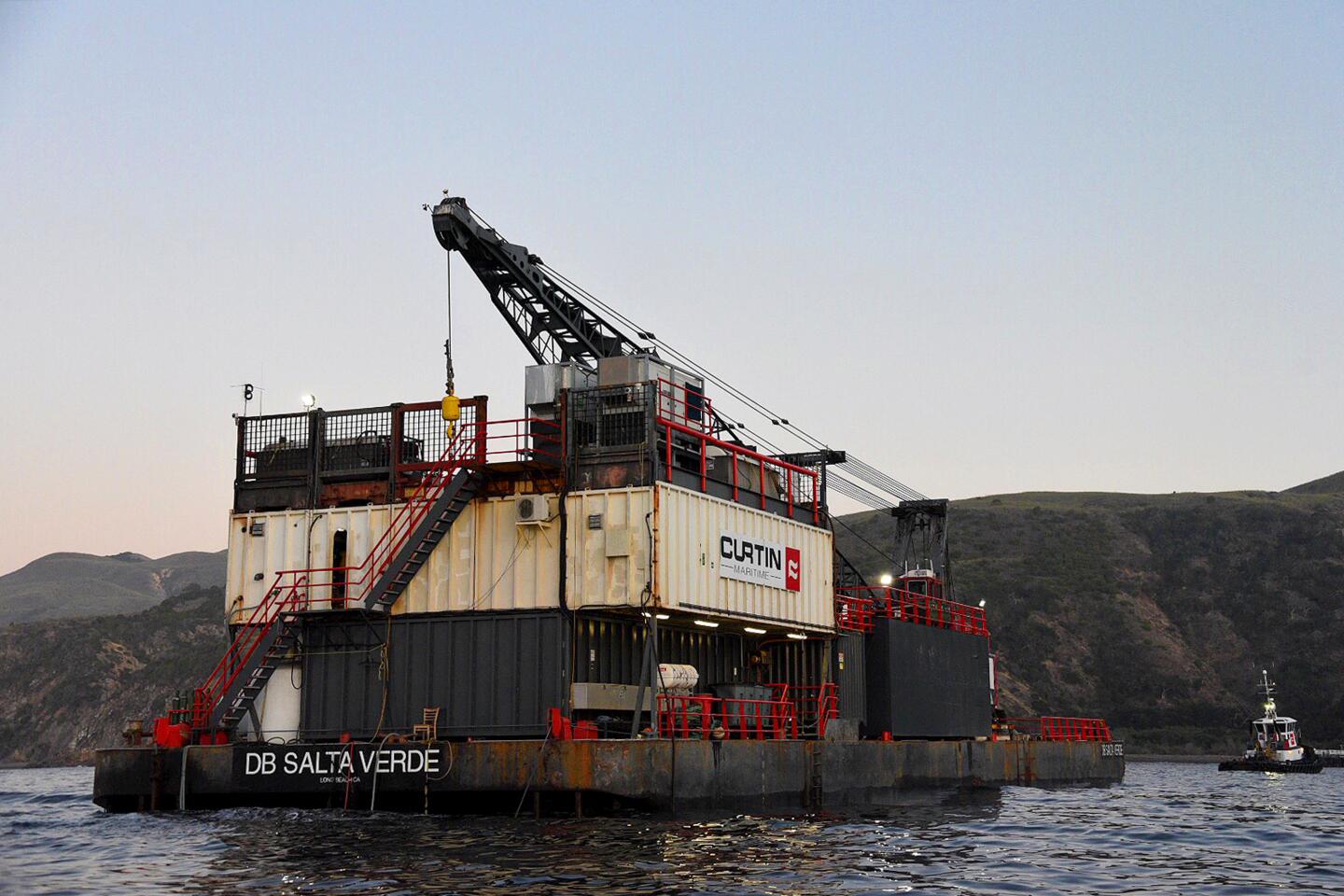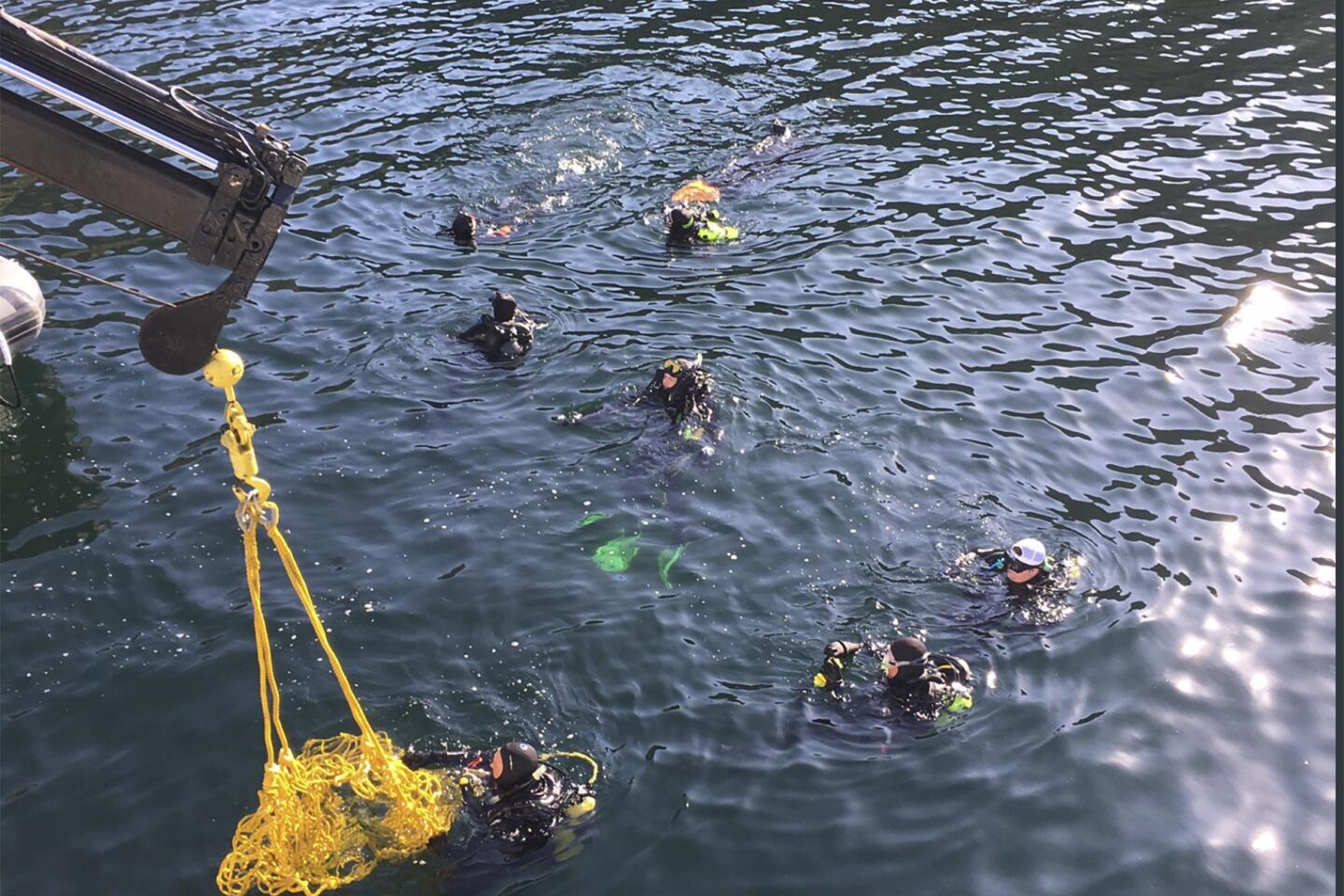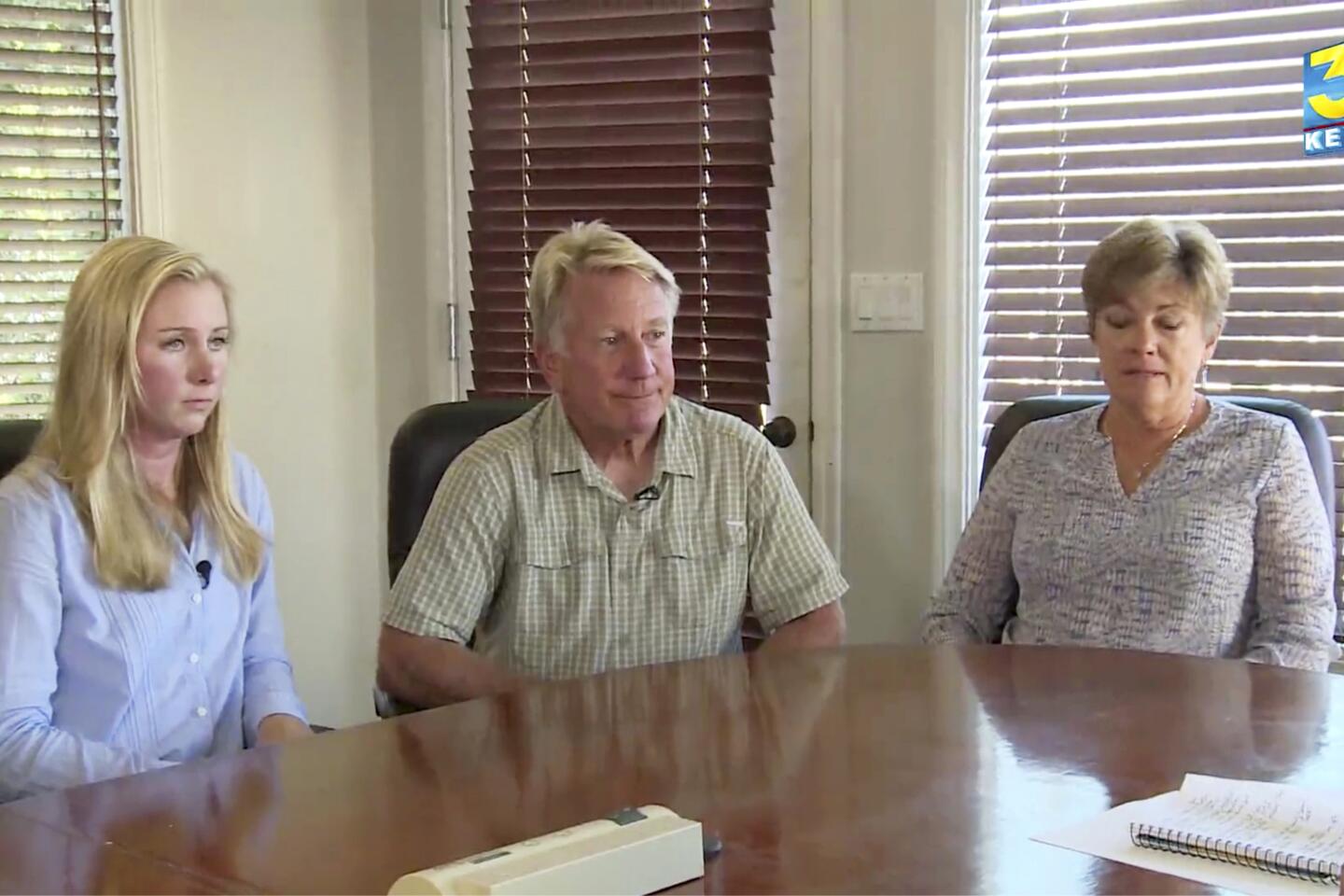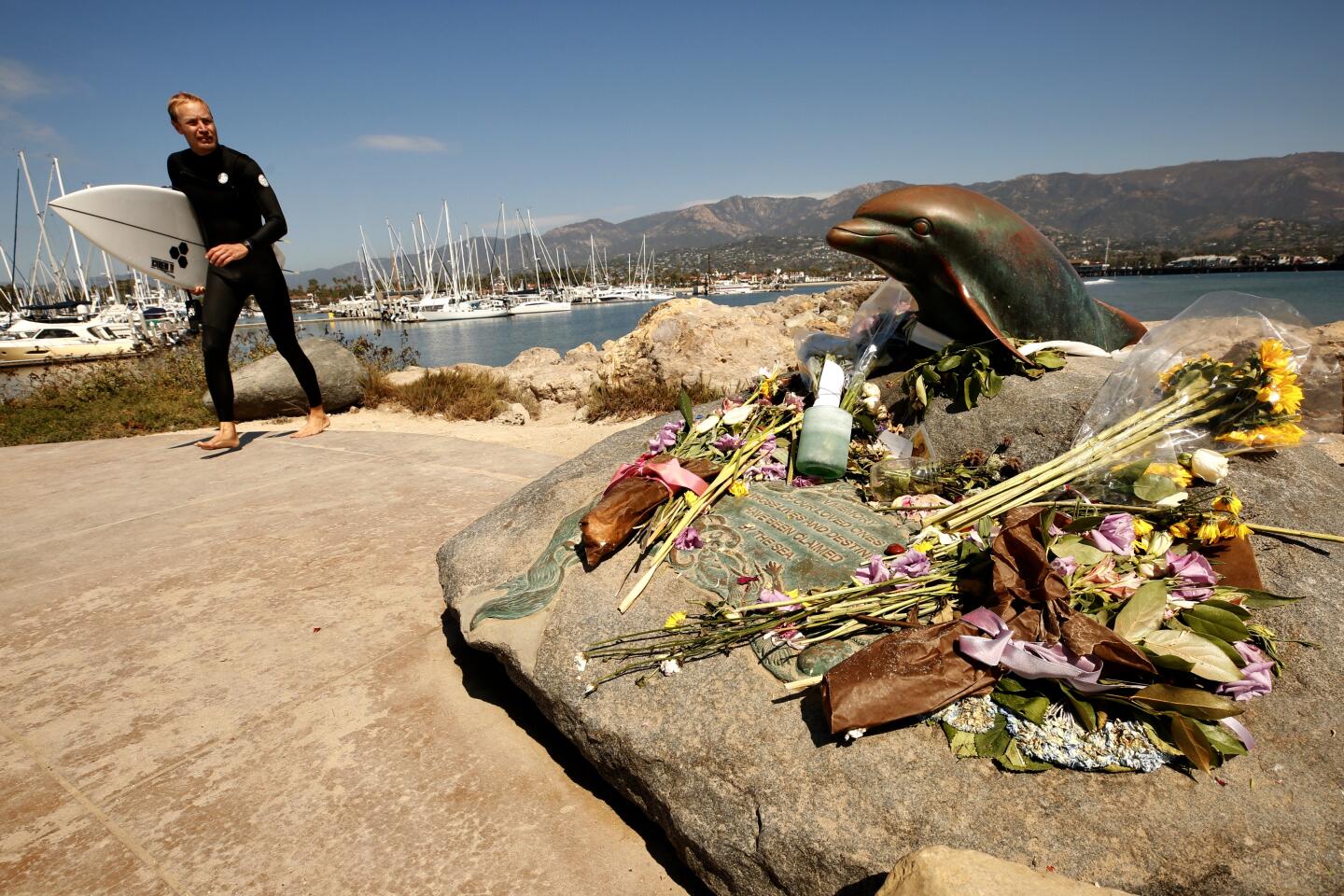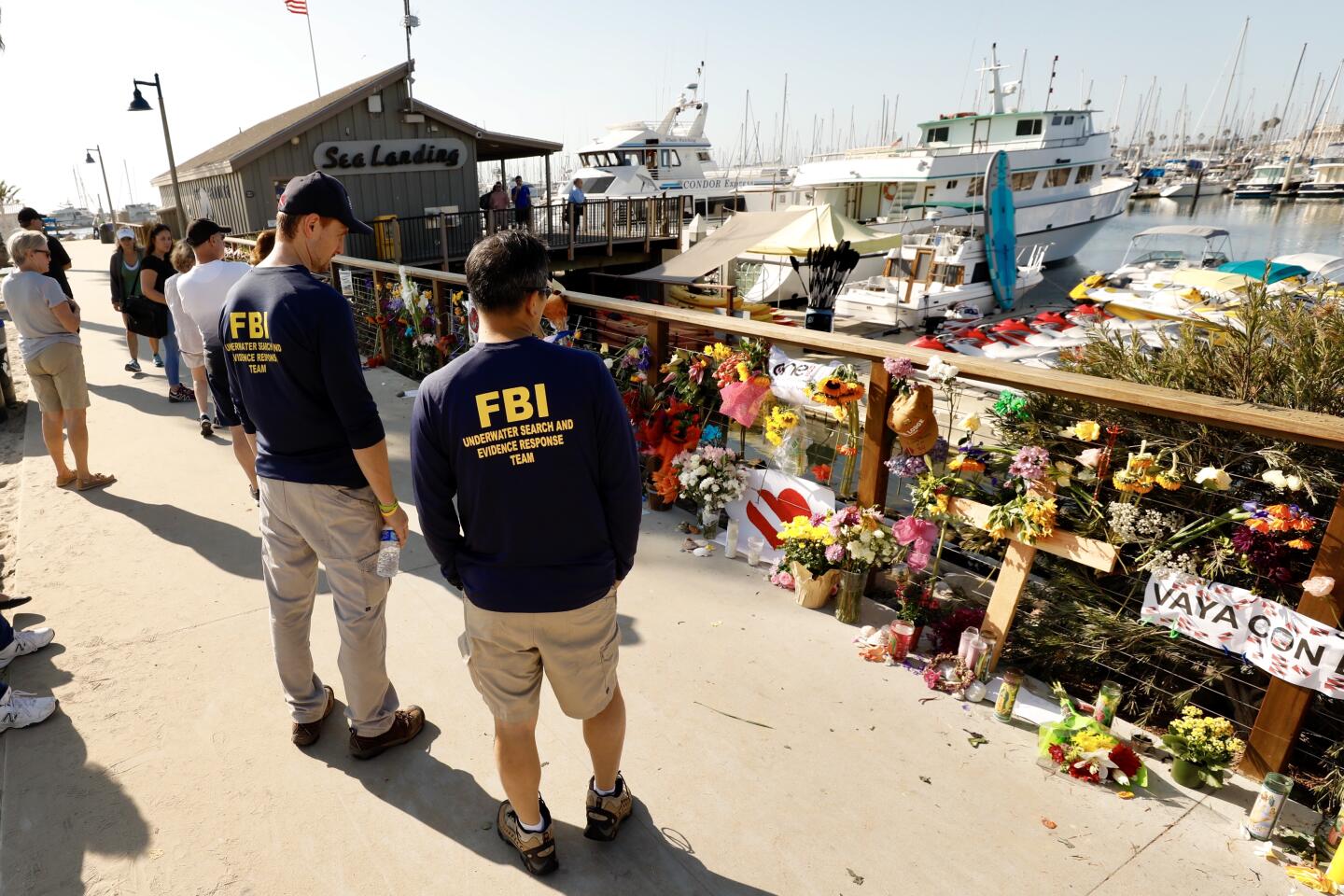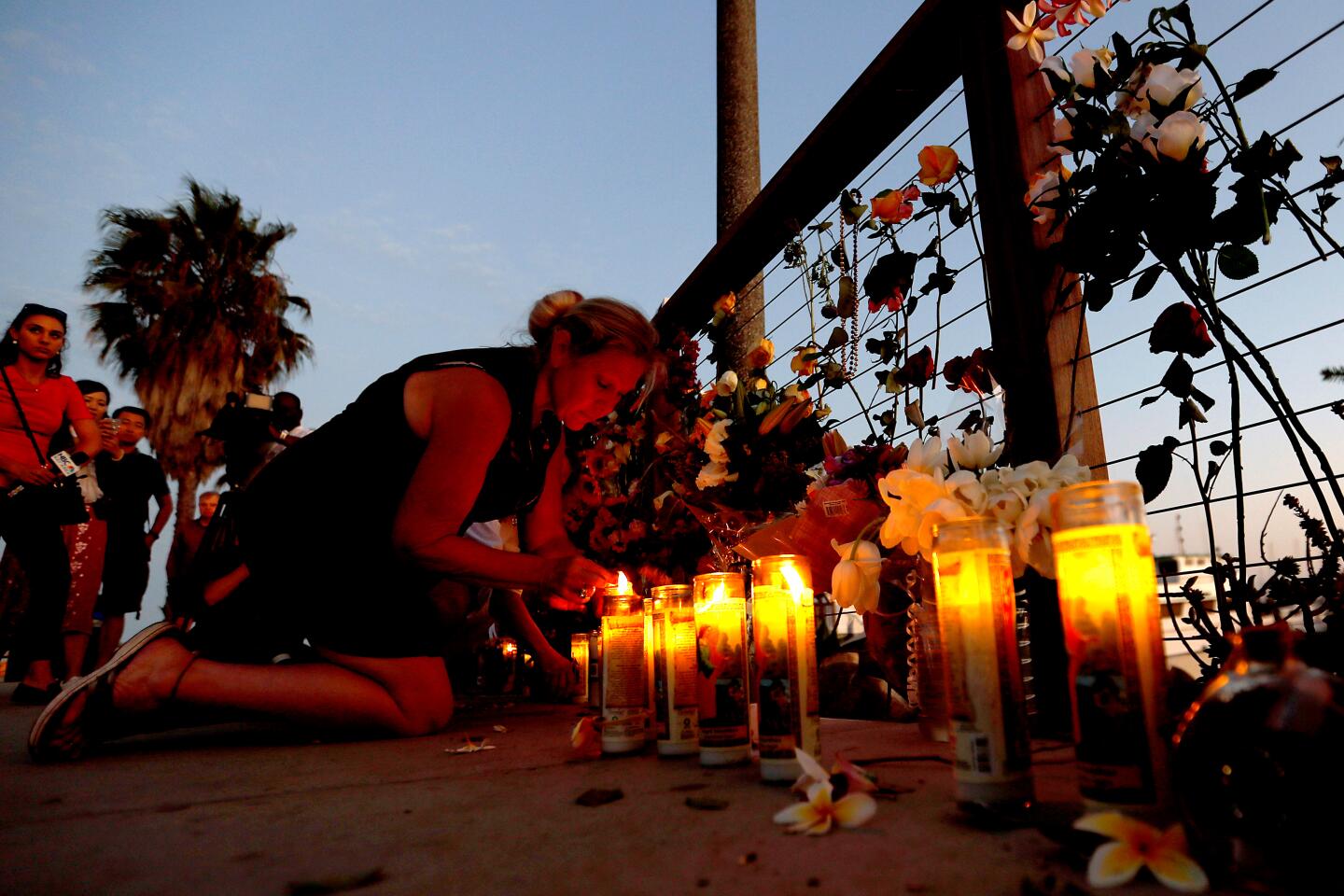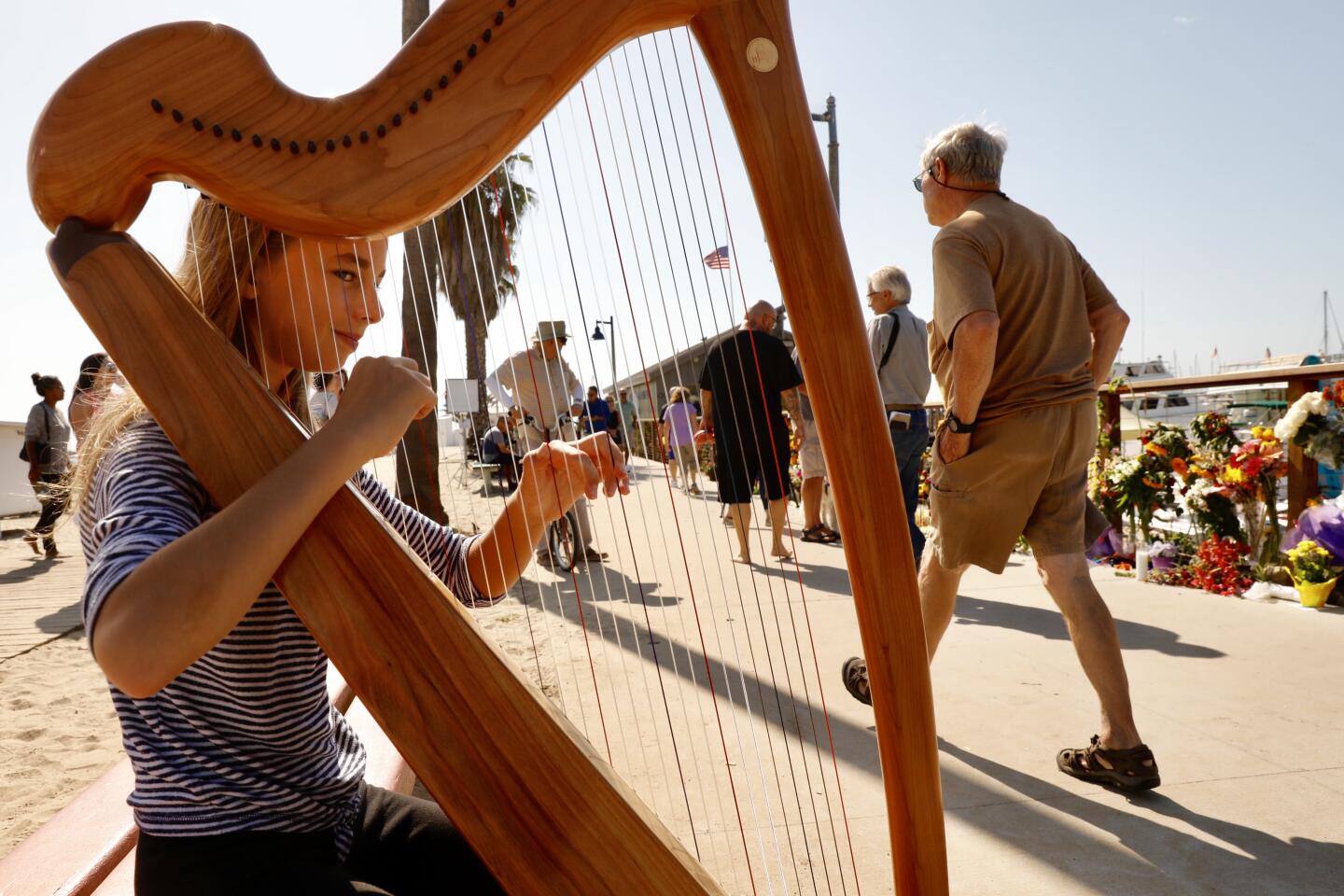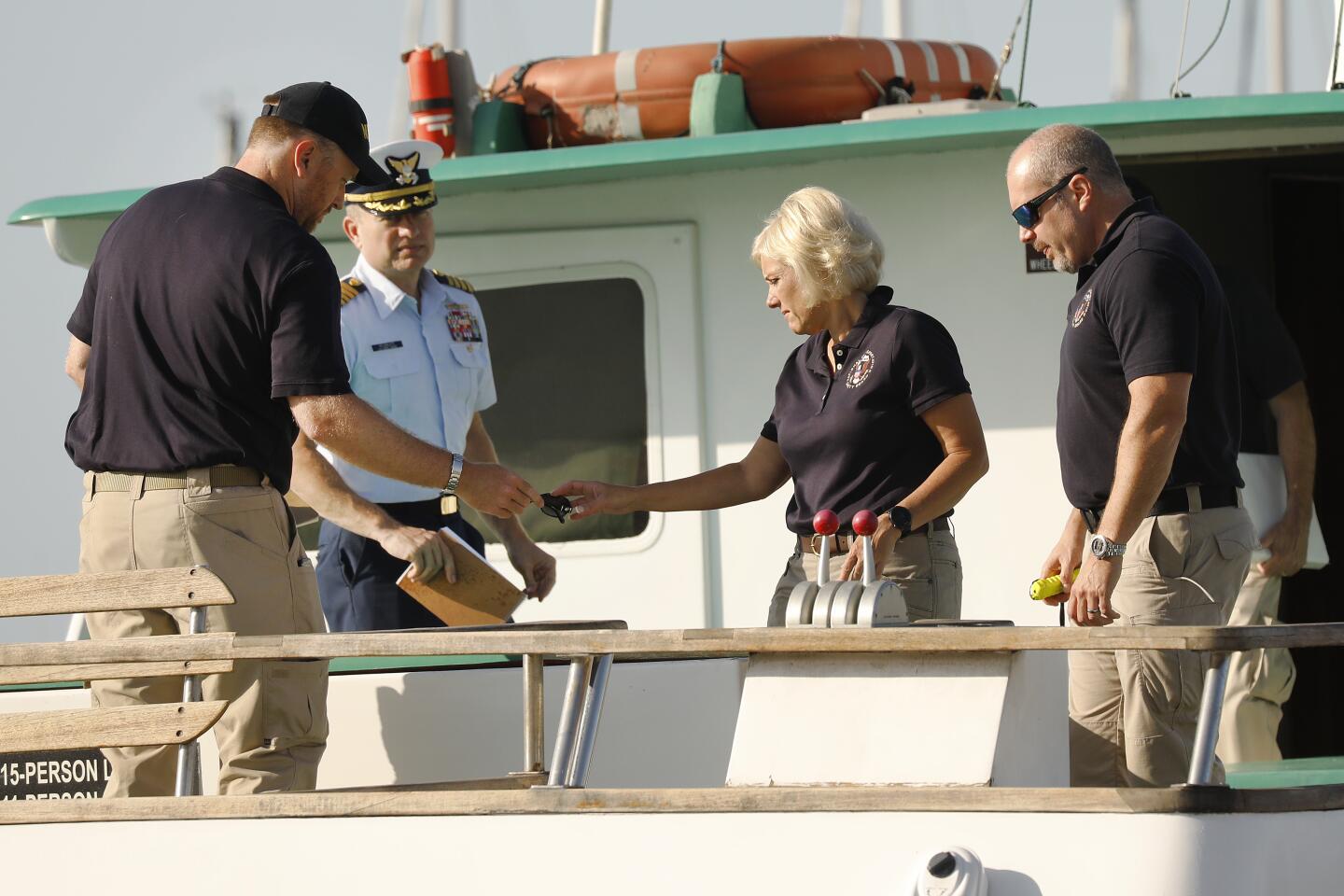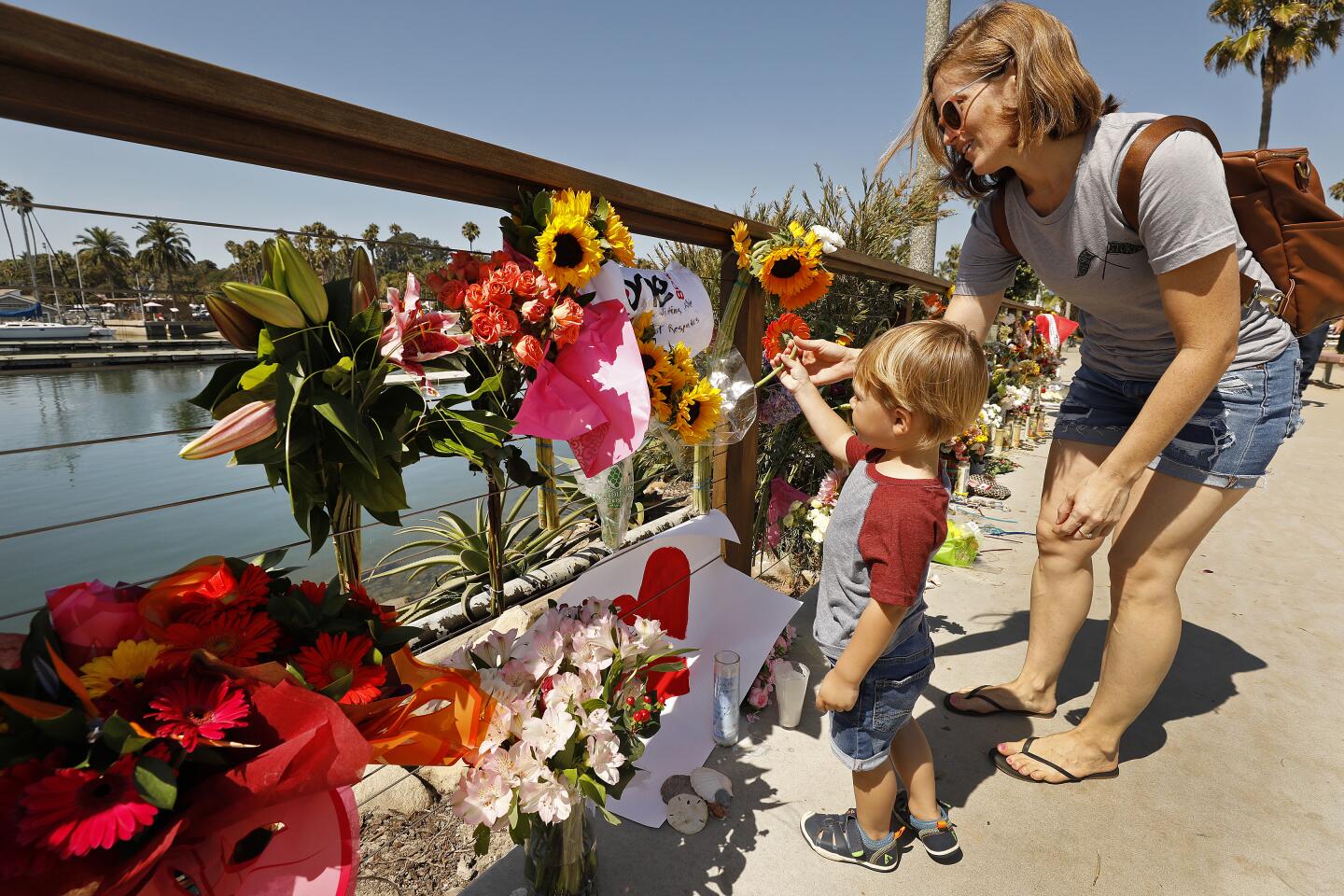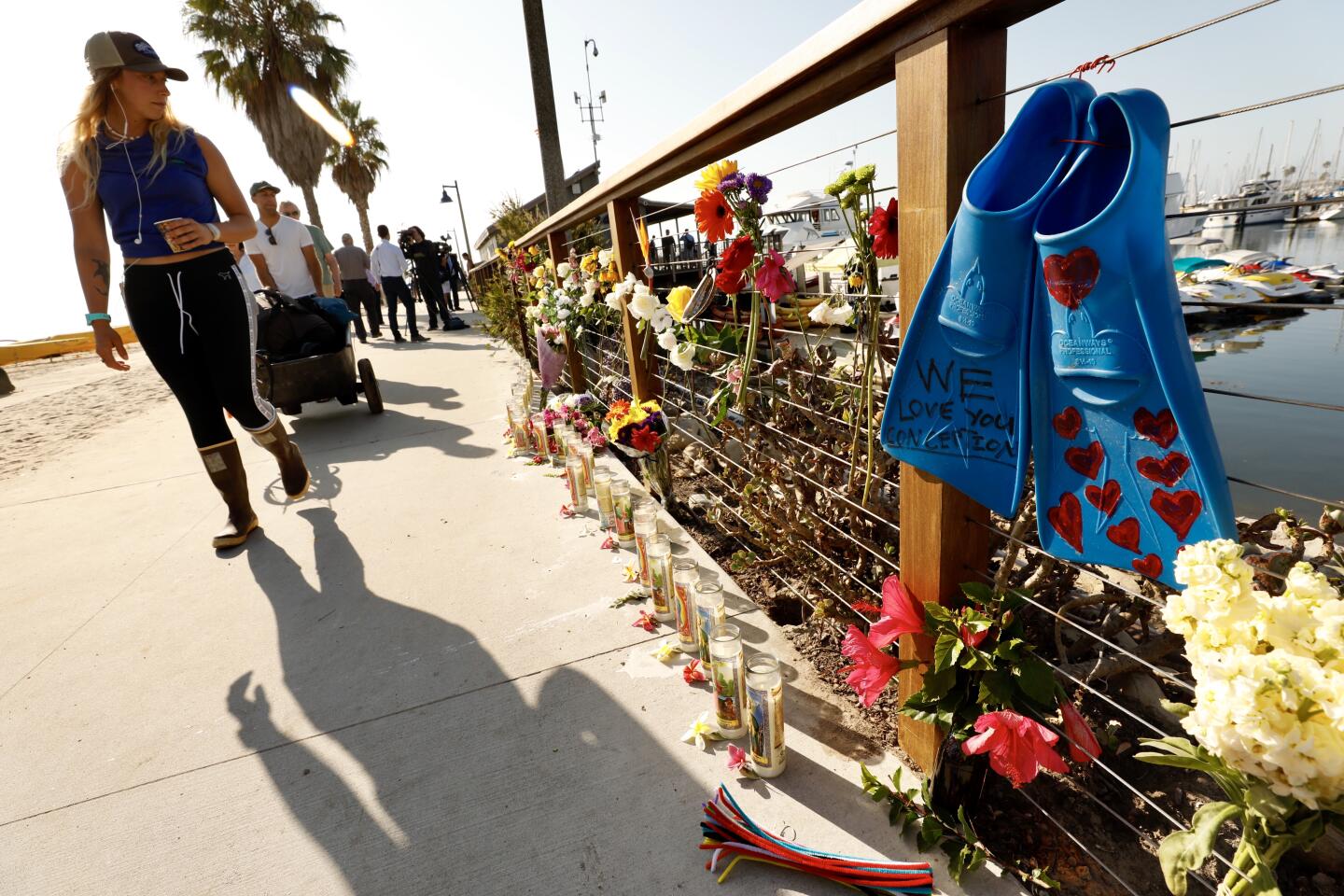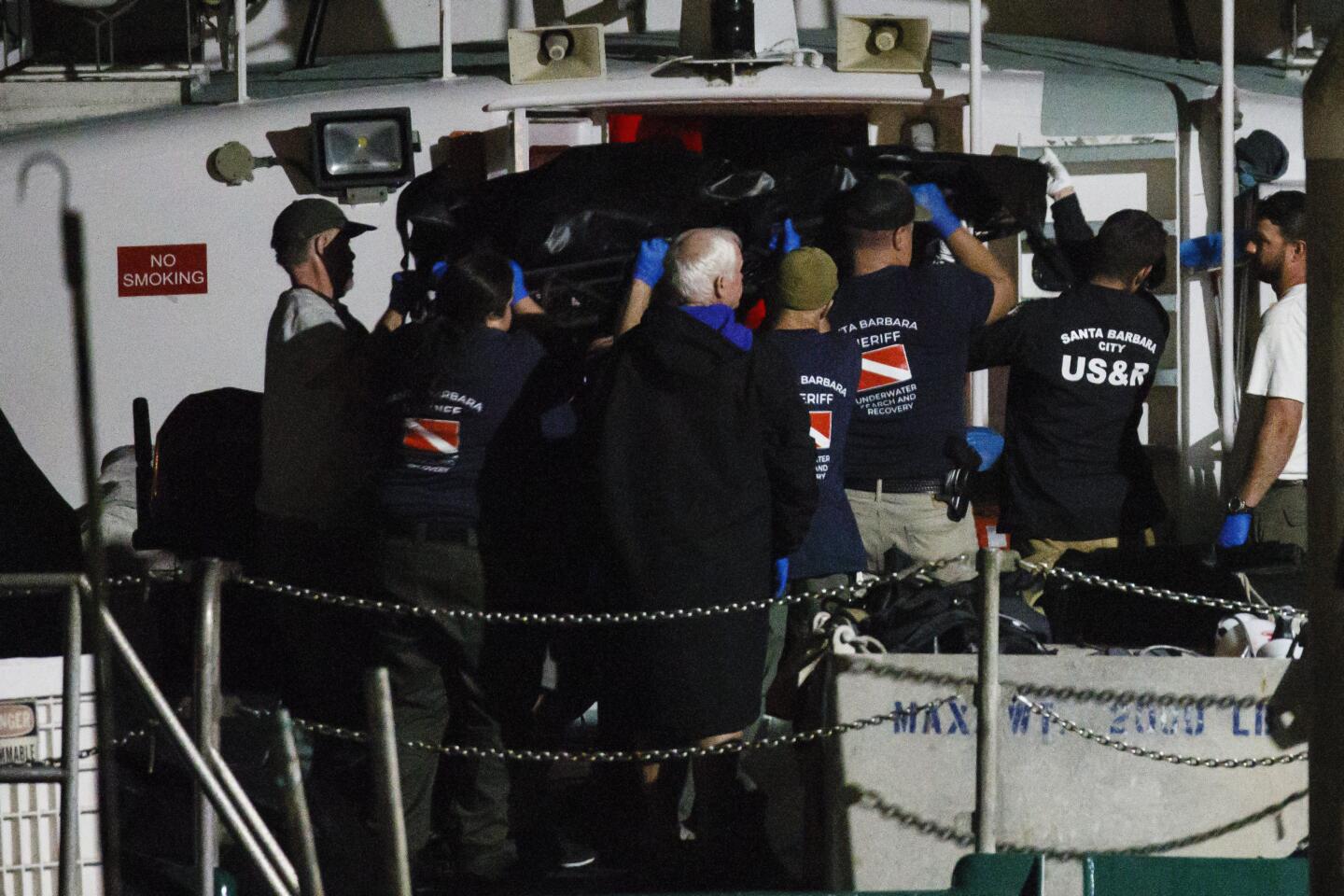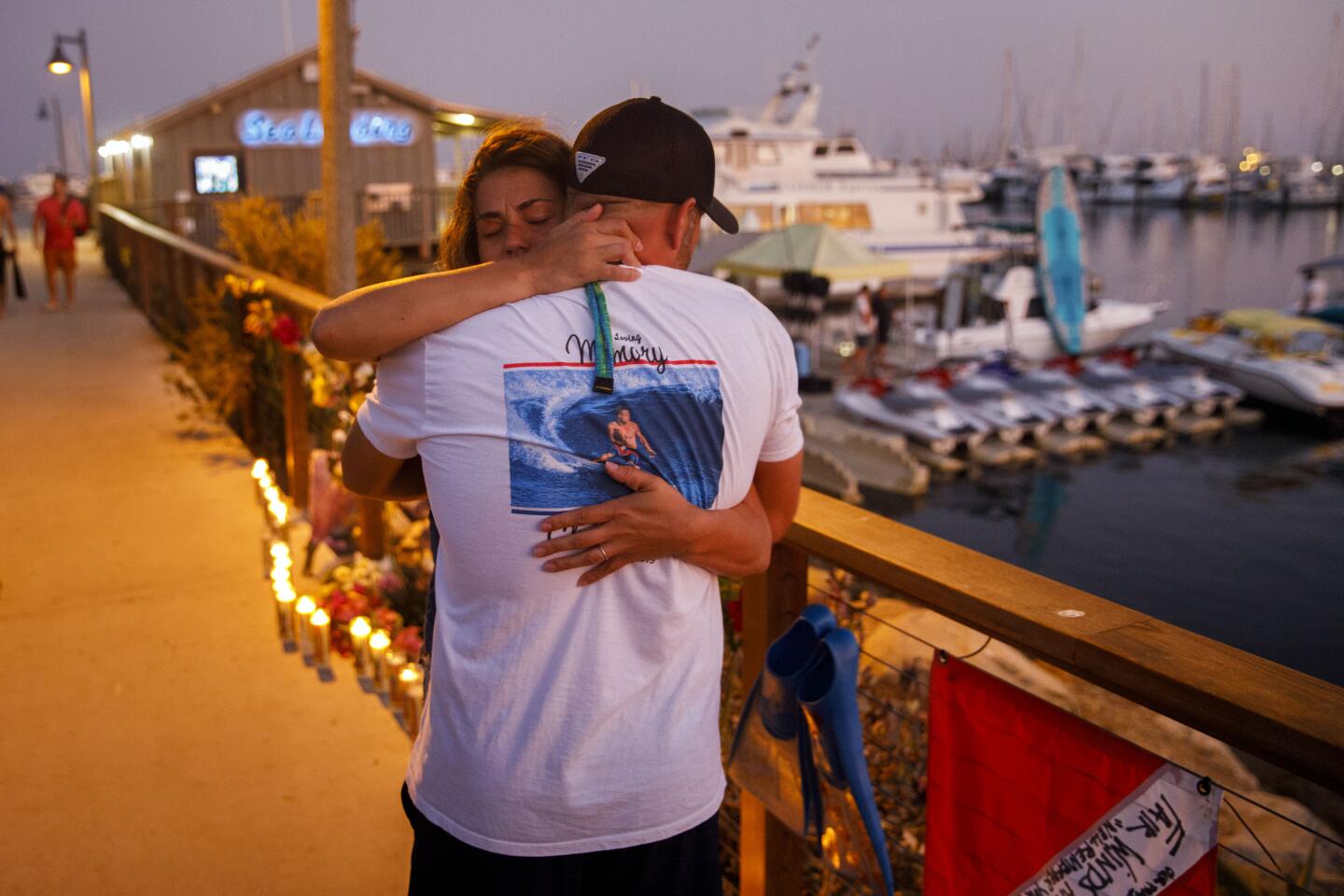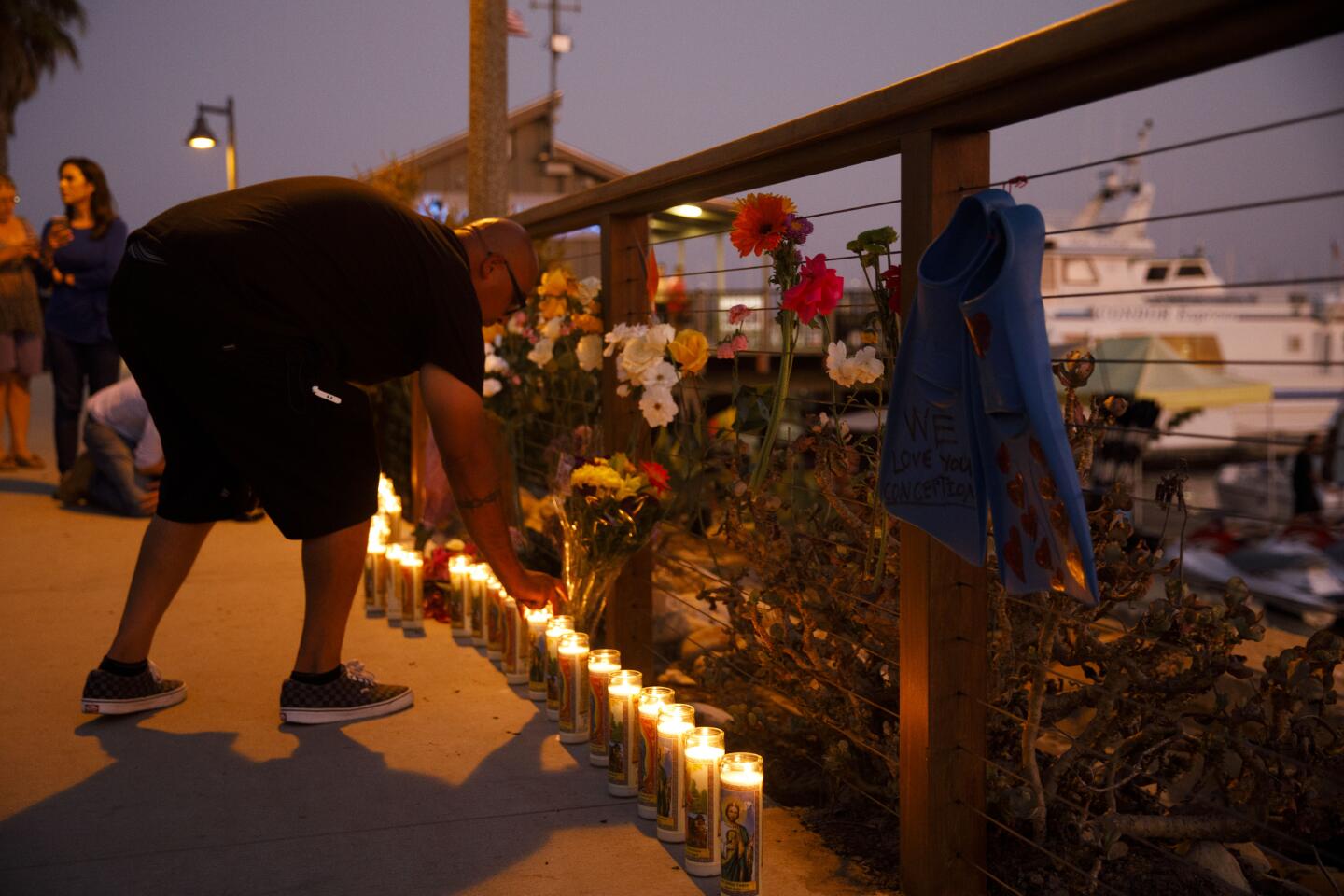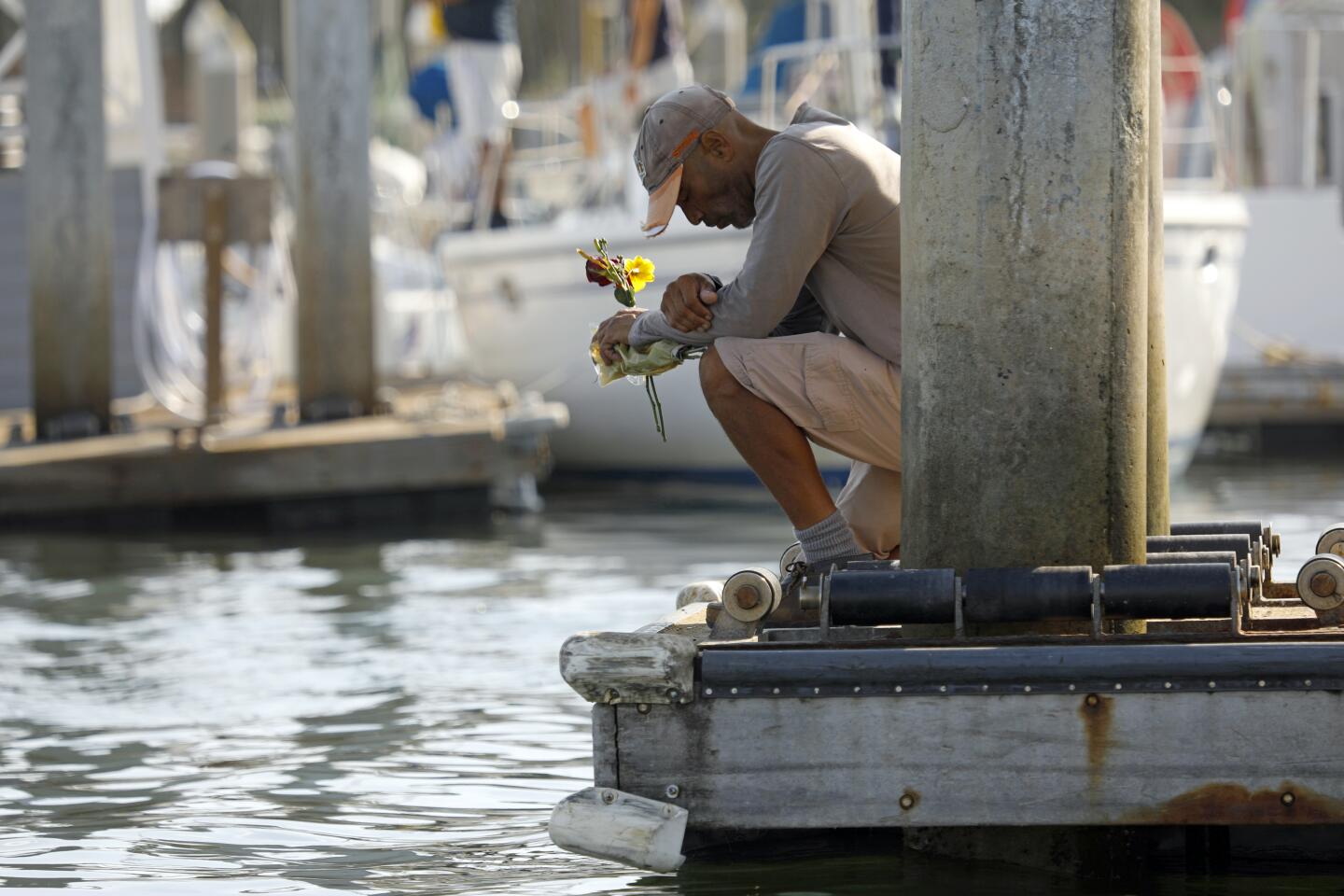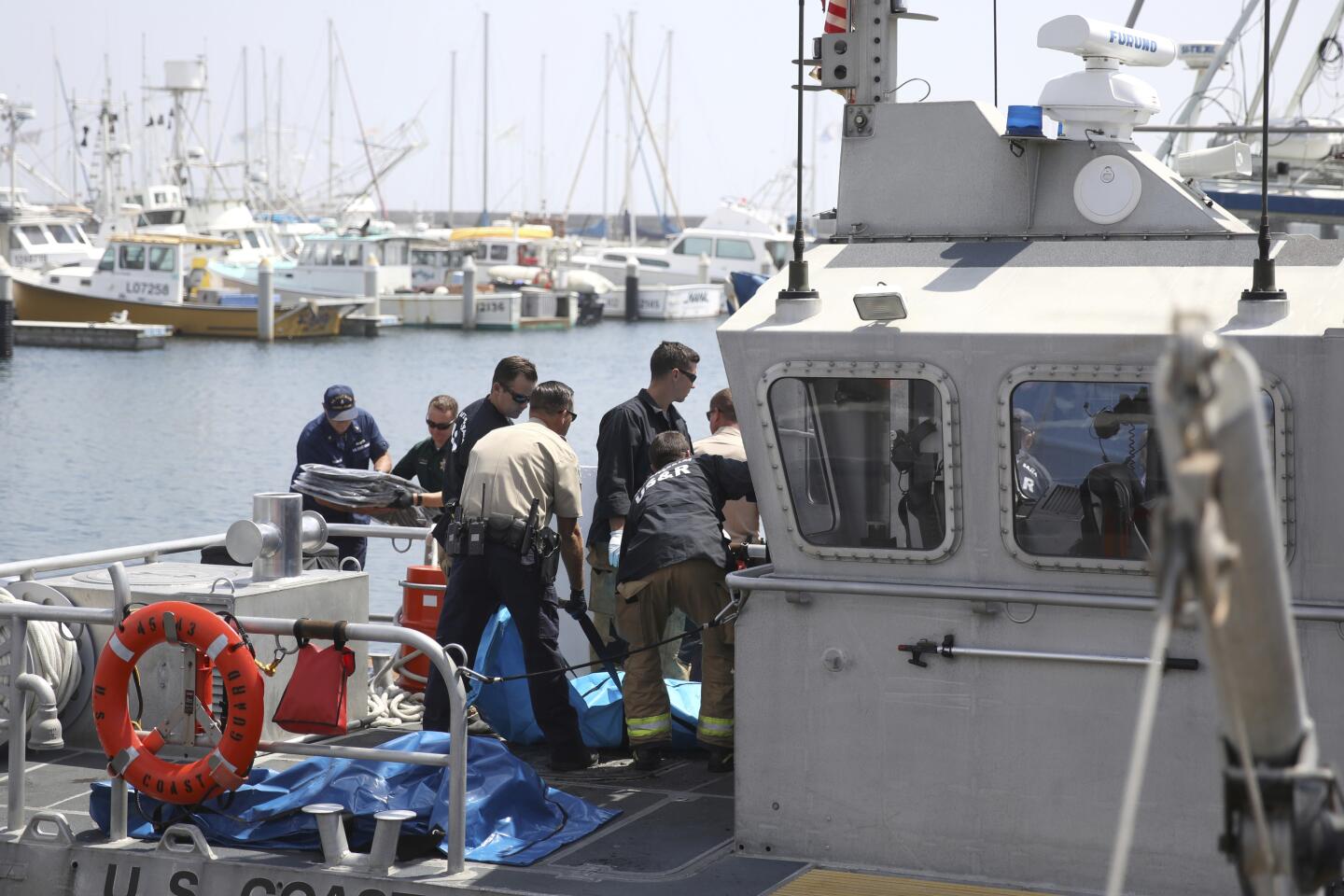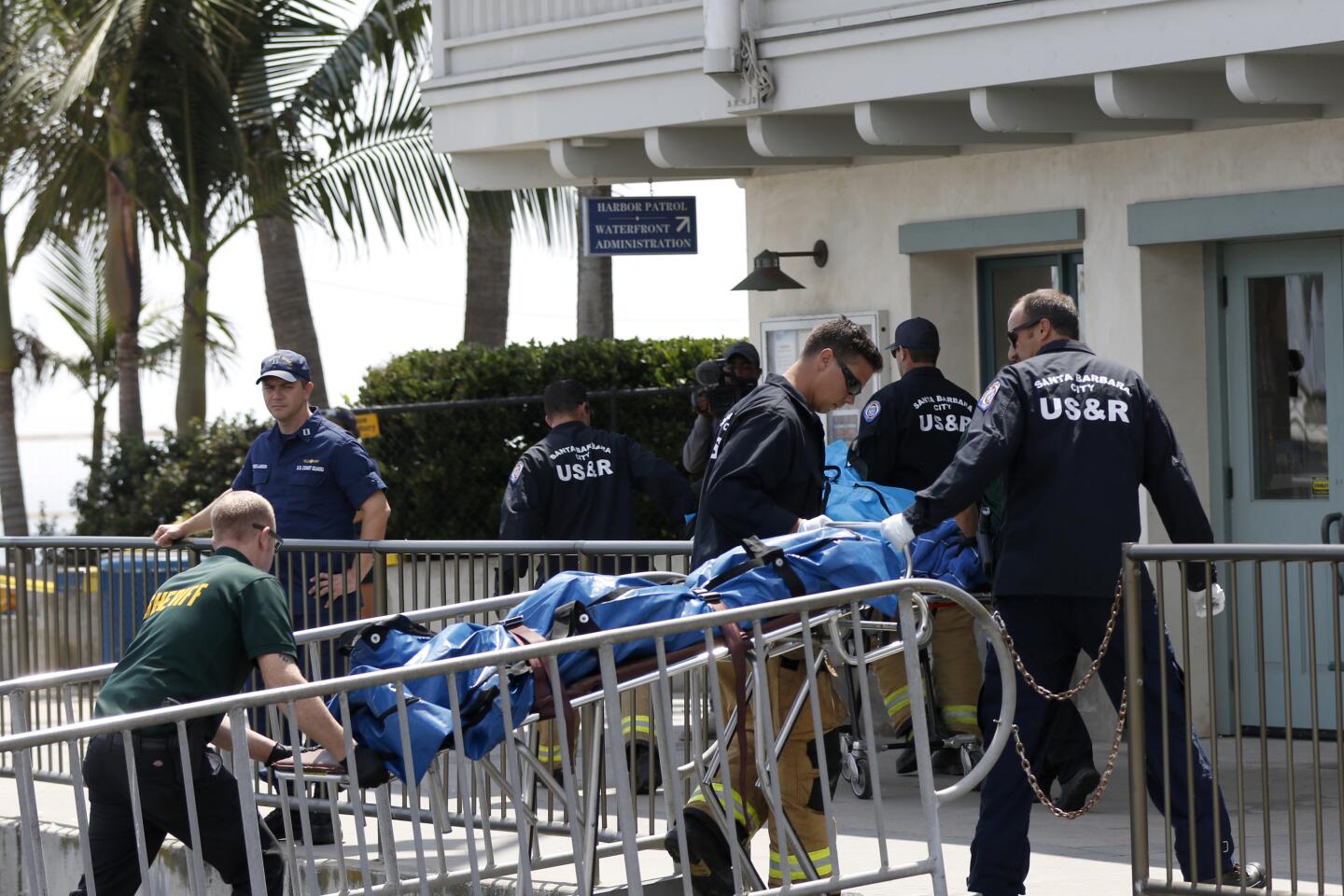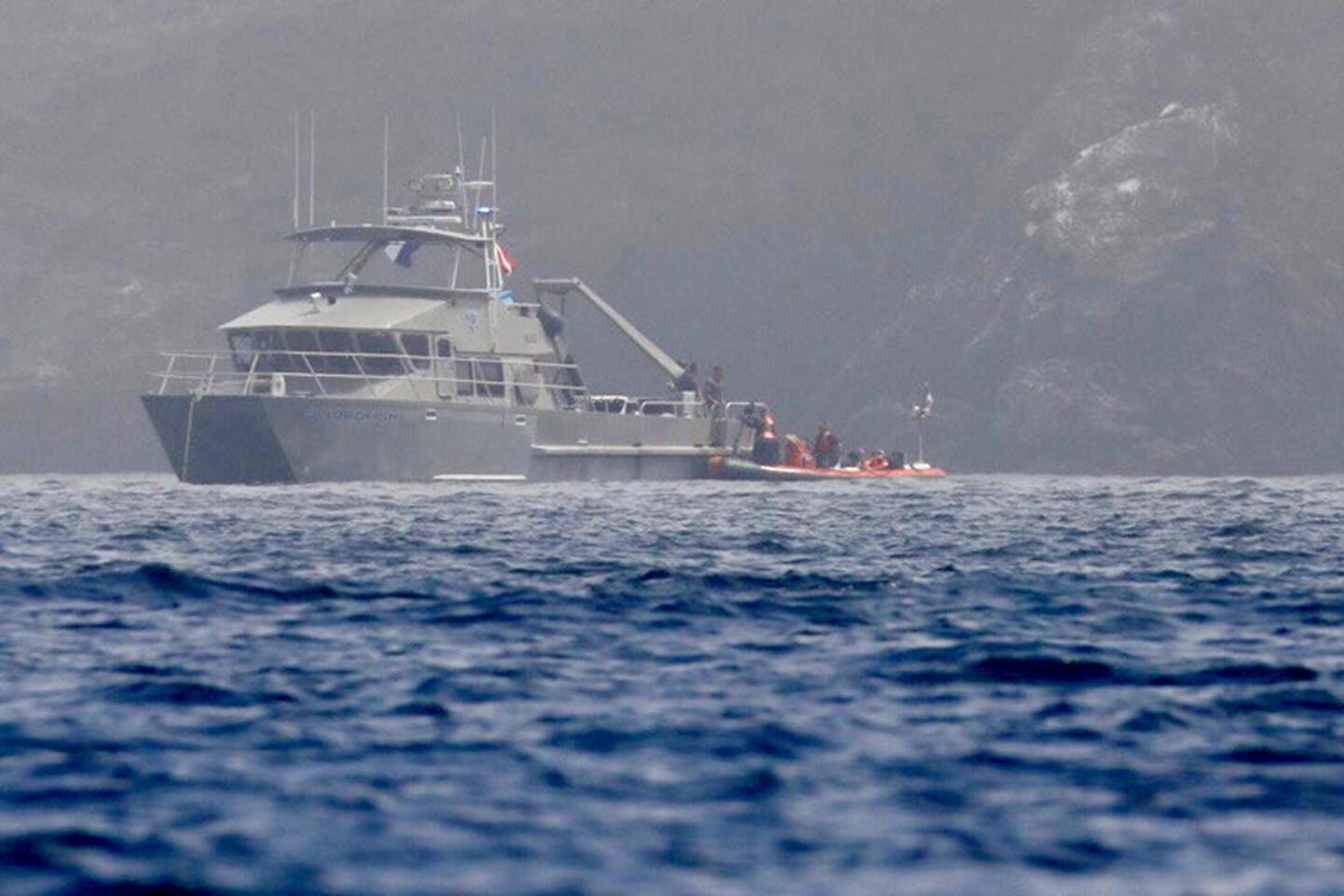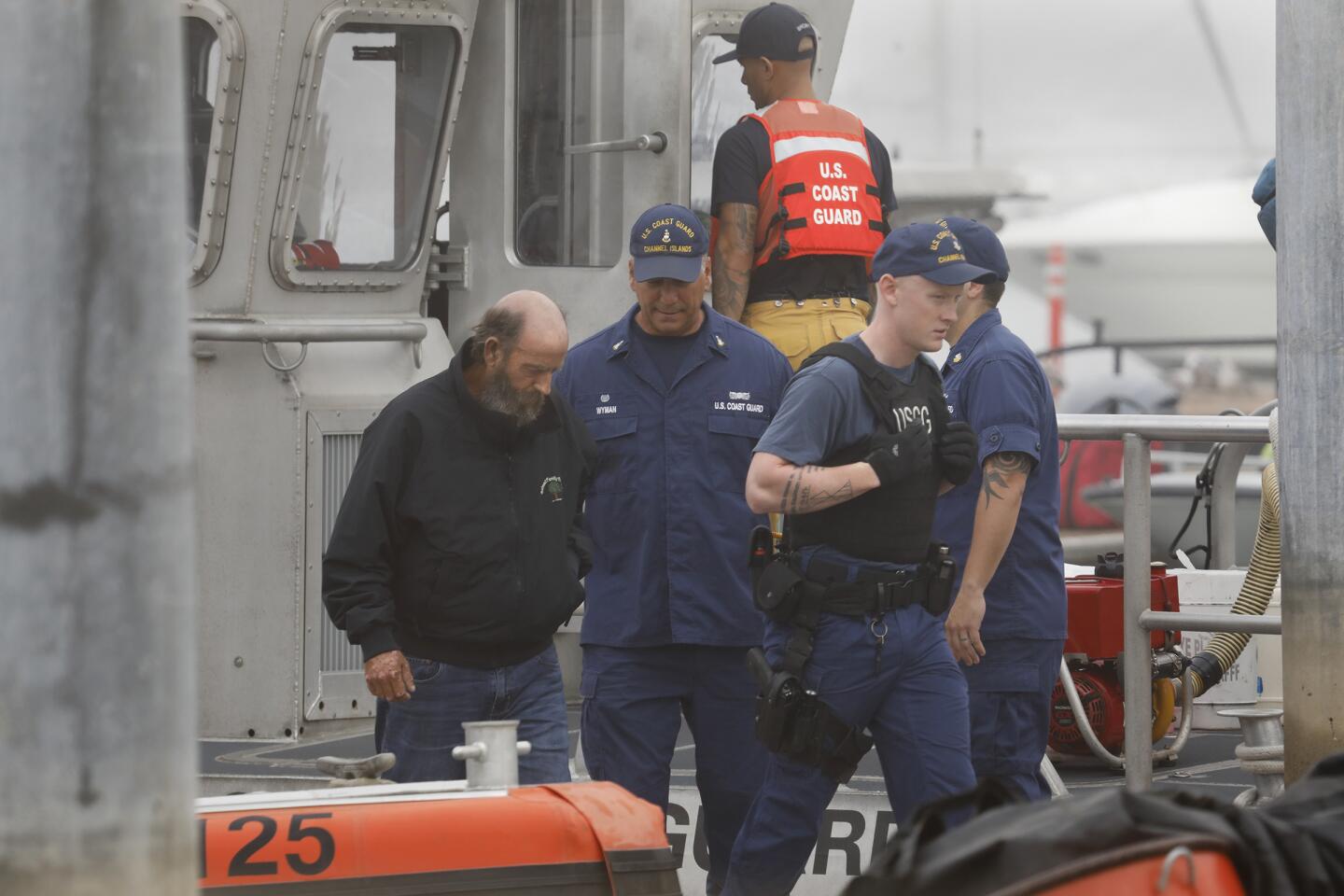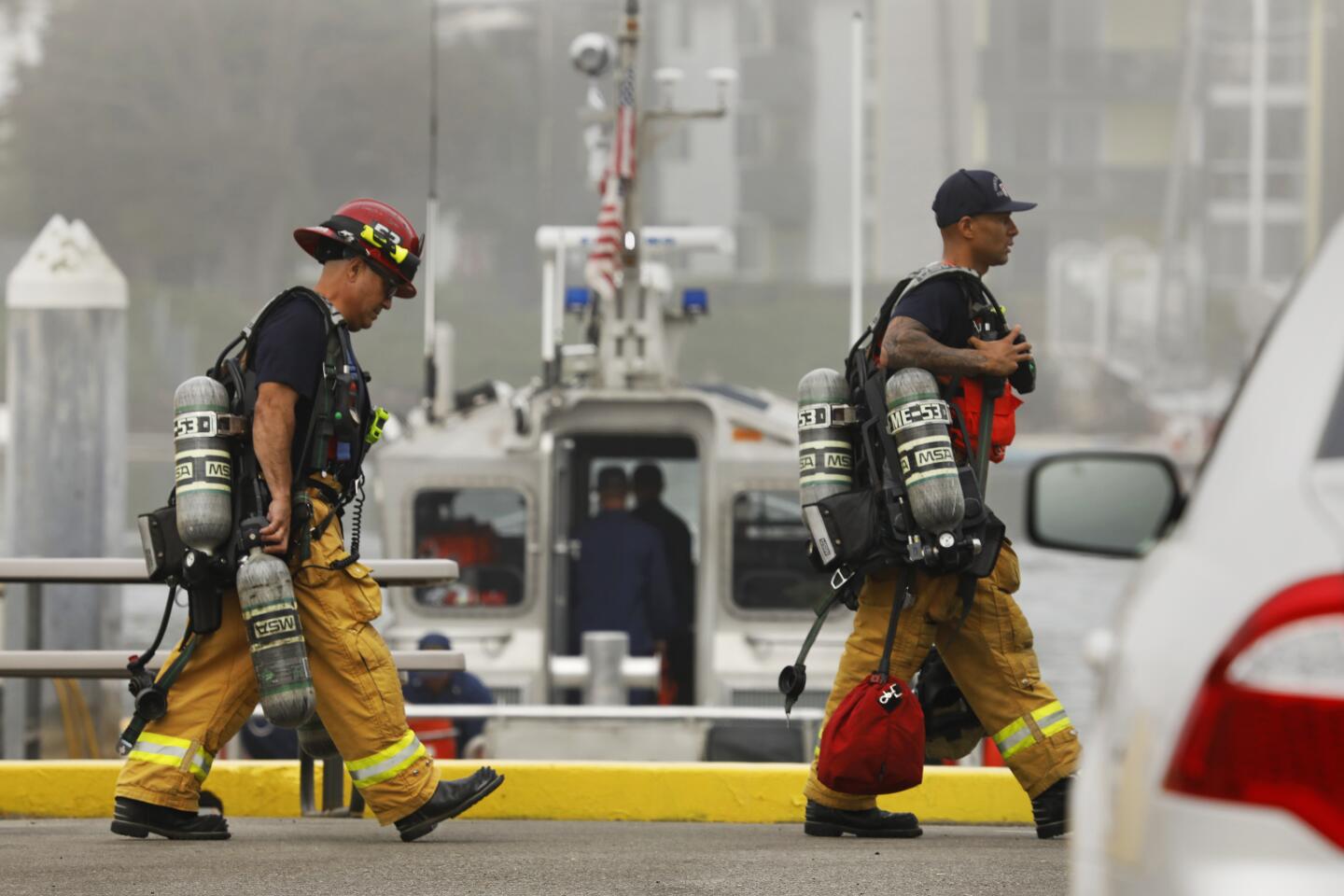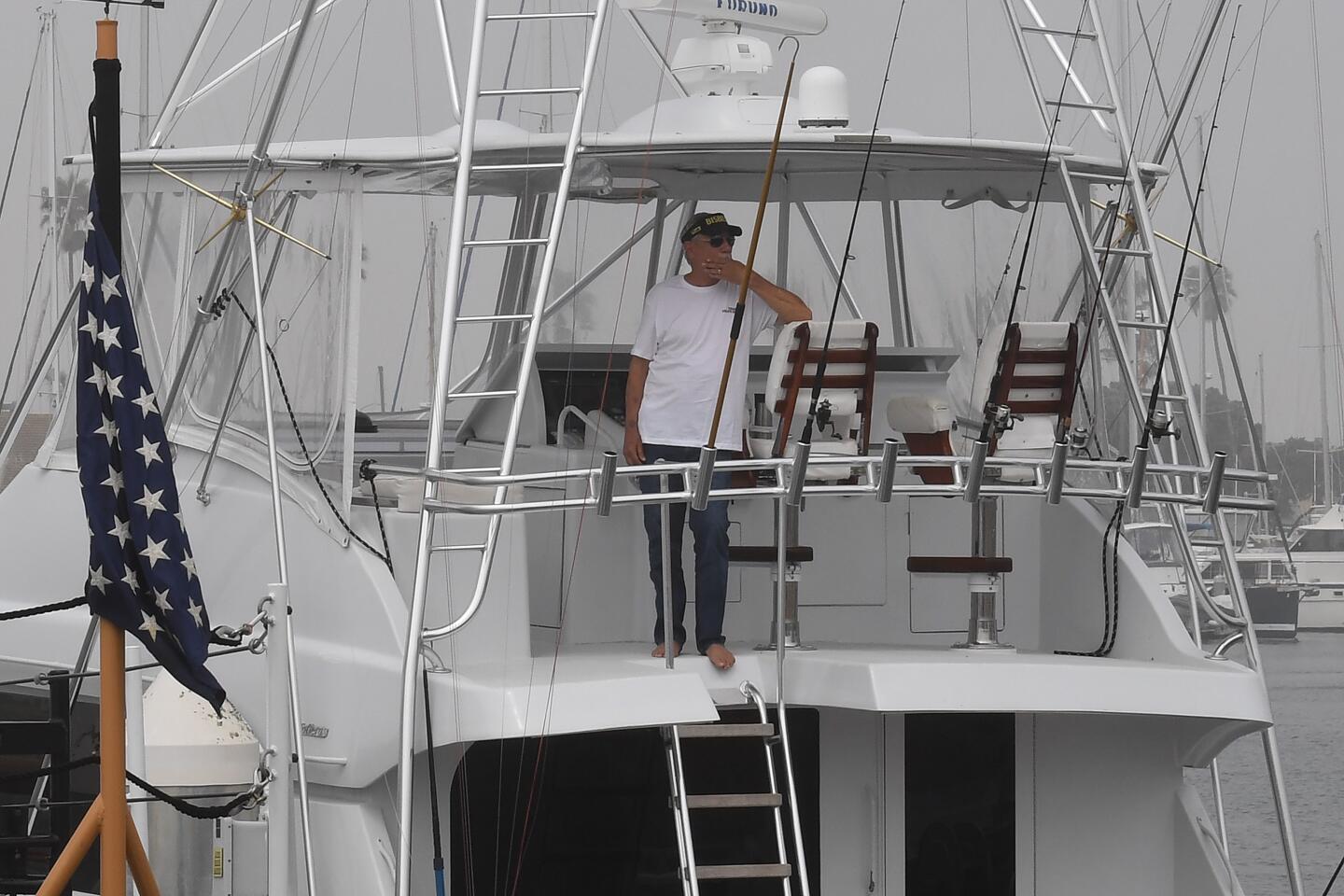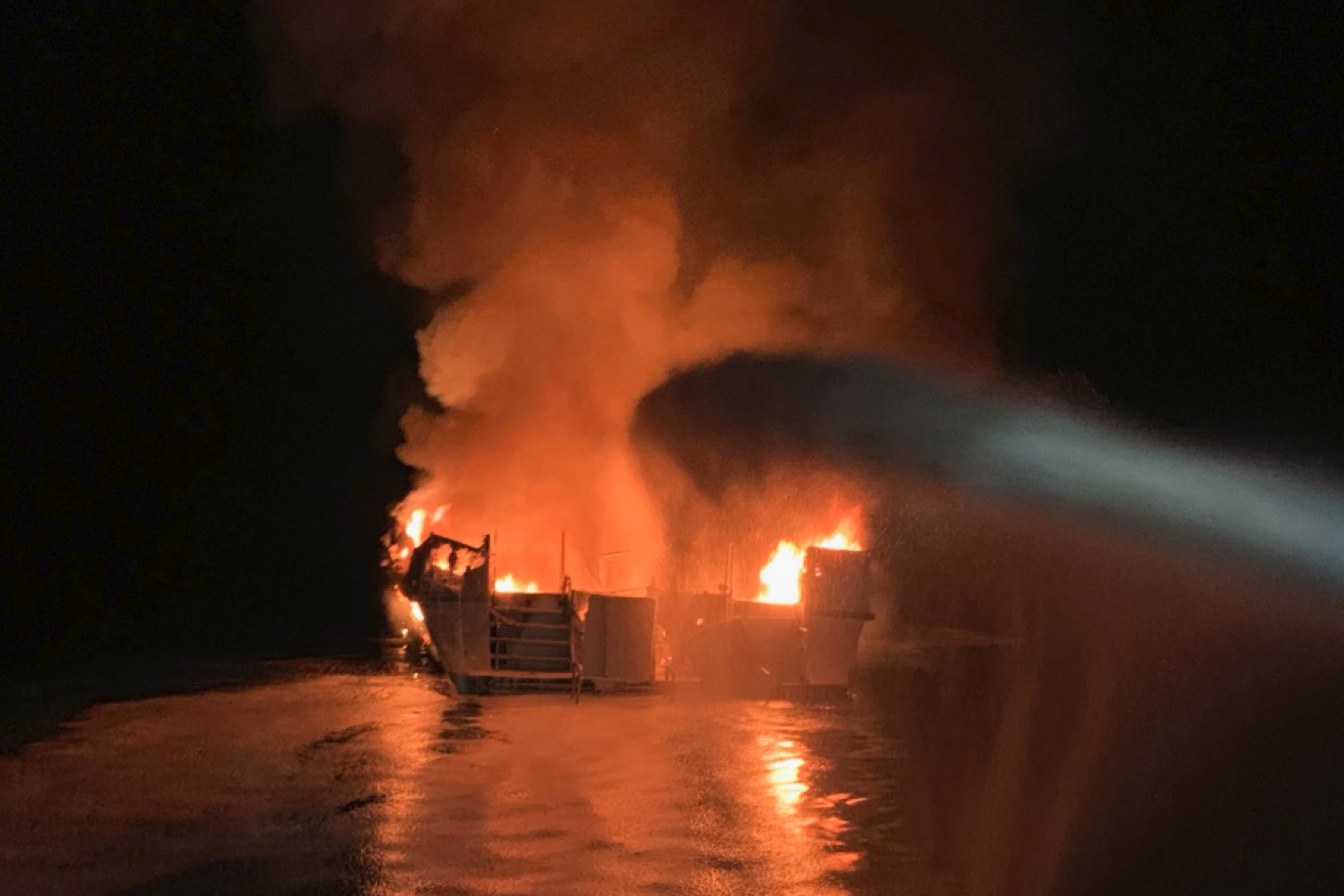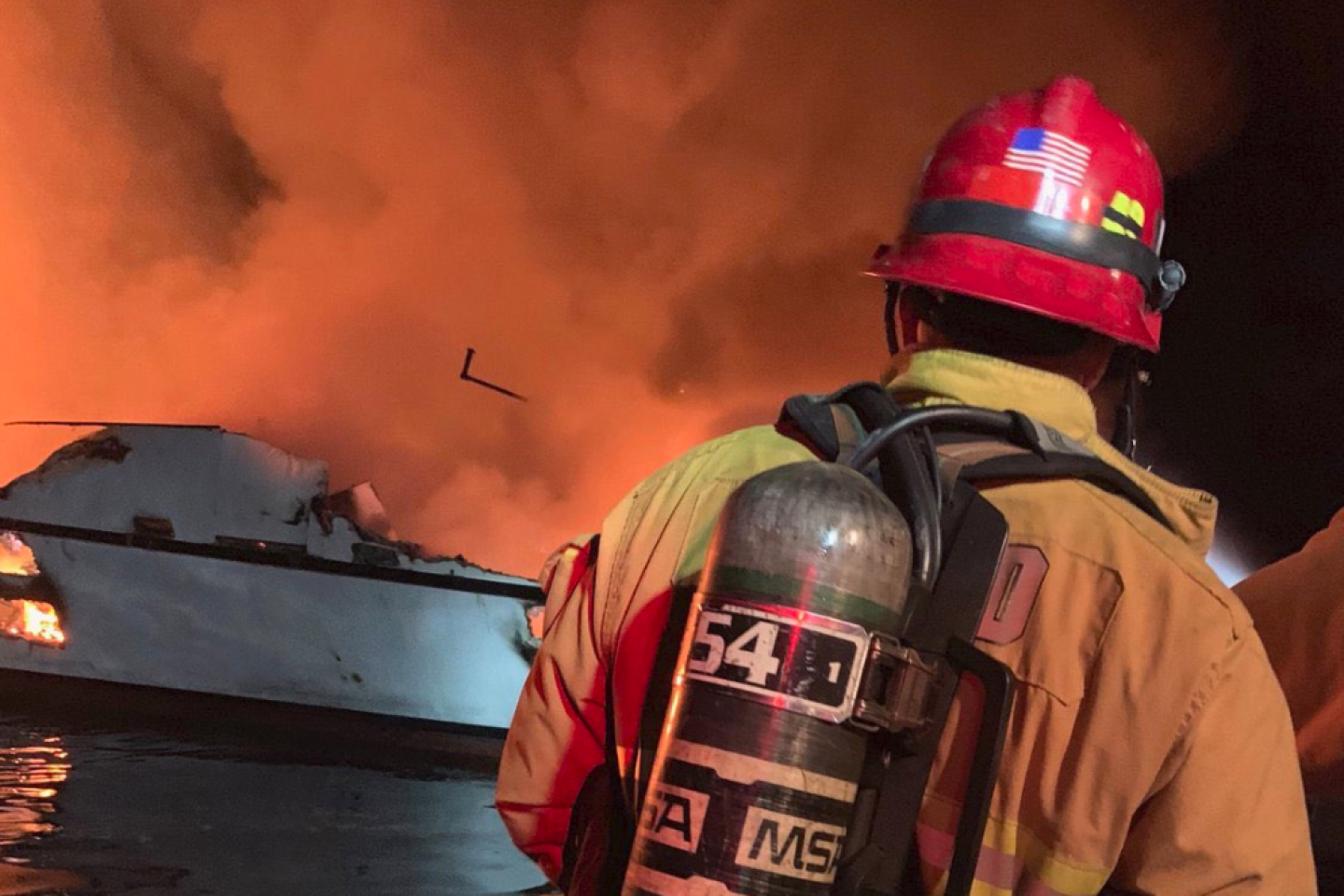Surviving crew member thought phone charging station might have sparked boat fire
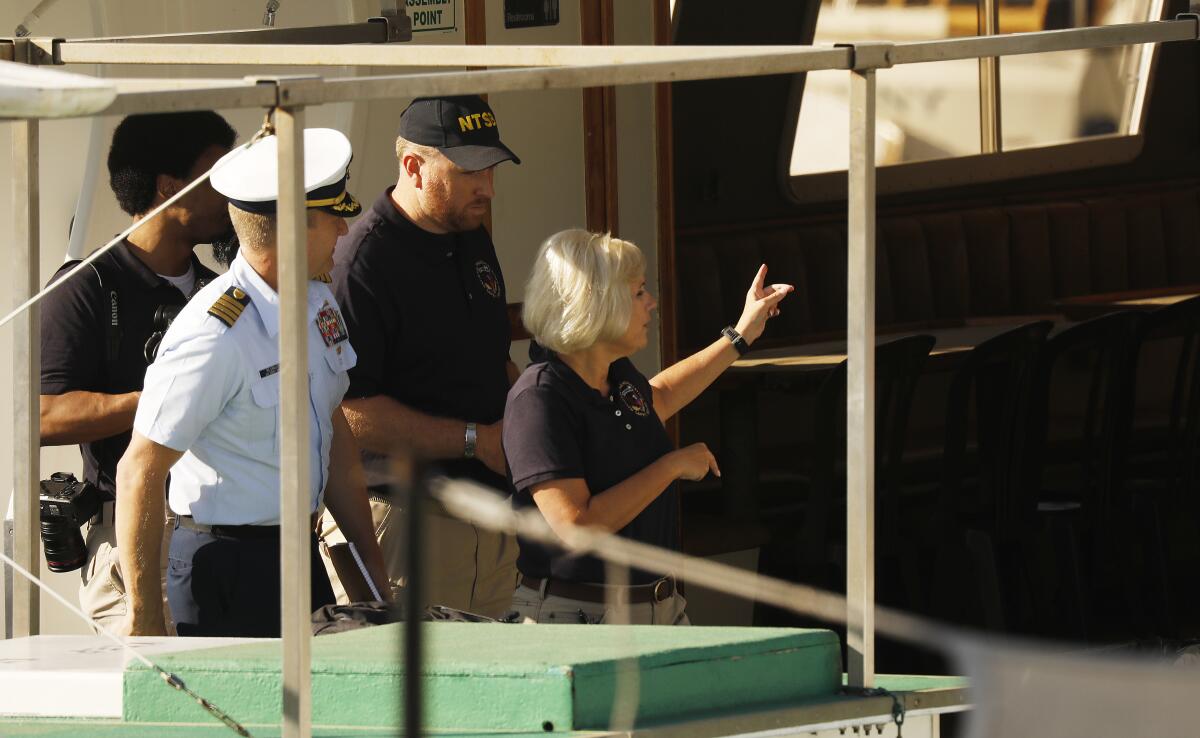
- Share via
One of the crew members aboard the dive boat Conception hadn’t been asleep long when a noise jolted him awake.
He swung open the door of the wheelhouse — the top level of the 75-foot boat, located just above the galley — and was greeted by flames.
As the fire raged in the predawn hours of Labor Day, the vessel’s captain made a frantic mayday call to the Coast Guard. Then he and four crew members jumped from the wheelhouse and climbed into a dinghy to get help from the Grape Escape, a fishing boat anchored nearby off Santa Cruz Island.
Once aboard, the crew member who had been jolted awake shook as he recounted the horrific story to Grape Escape owner Shirley Hansen. His theory, Hansen said, was that the fire started in the galley, where cellphones and cameras had been plugged in to charge overnight.
“The impression I got was that the fire was already too big to do anything,” Hansen said in an interview Wednesday.
The cause of the fire, which killed 34 people, is now the subject of an intensive investigation by the National Transportation Safety Board, the U.S. Coast Guard and other federal and county agencies. Investigators are trying to determine where and how it started.
A commercial diving boat caught fire near the shoreline of Santa Cruz Island, Calif., early Monday. Many aboard the boat were believed to be sleeping below deck when the fire broke out in the pre-dawn hours.
The concern about the charging station in the galley is one possibility.
Roy Hauser, who designed the Conception and commissioned its construction in 1981, suggested another. He said he thought, based in part on footage he viewed of the wood-hulled boat being ravaged by fire, that the blaze started in the bunk area and spread so rapidly that the 34 people there could not get out.
“This had to have been, in my estimation, one of those lithium battery chargers,” Hauser told The Times. “This happened in the belly of the boat. Those people did not have a chance to get out: From stem to stern, that boat was burning.”
The Conception was one of three dive boats operated out of Santa Barbara Harbor by Truth Aquatics Inc., a long-established operation founded by Hauser in 1974 and now owned by Glen Fritzler.
The diesel-powered boat had three decks: the wheelhouse on top, the main dive deck in the middle and the bunk room on the bottom.
The sleeping area had 20 single bunks and 13 doubles, some stacked three high, records show. When fire consumed the boat, the bunks were occupied by 33 passengers and one crew member.
For those in the bunk room, there were two exits. At the bow end of the room was a staircase that led up to the galley area. Toward the stern, an escape hatch located above one of the bunks led to a mess area next to the galley — and just a few feet from the large, open main deck.
Officials said Tuesday that both exits from the bunk area were blocked by fire. Hauser said passengers should not have been impeded by flames — if they had been able to get to the escape hatch from the bunk room.
“When you come out of the escape hatch, you look straight out to the main deck — you’re within 3 or 4 feet of the main deck. All you have to do is lurch forward,” Hauser said. “I don’t think those people ever had a chance to get out of their bunks.”

Boat fires often start in engine compartments, where fuel ignition sources can combine. Other such fires have been traced to electrical sources, such as wiring harnesses or batteries, or to external causes such as fires in marinas or storage facilities.
Hauser said the rapid spread of fire caused by a lithium battery could explain why no one got out.
The Federal Aviation Administration prohibits airline passengers from stowing devices containing lithium batteries — such as those in cellphones, laptops and cameras — in checked luggage unless they are turned off and protected from damage. As of Aug. 1, the FAA had recorded 265 air or airport incidents involving lithium batteries in cargo or baggage.
The U.S. Navy and others in the dive industry also have expressed concerns about lithium batteries, which in various sizes are used to power everything from automobiles to hoverboards. They also power smaller devices, such as cellphones and camera equipment, that can be carried aboard boats.
“Lithium cells and batteries offer many advantages compared to other power sources,” U.S. Navy guidelines state. “However, they are high-energy devices and shall be considered hazardous at all times. “
Mike Strong, a Phoenix-area PADI master dive instructor, said, “We’ve all seen these batteries go,” alluding to reports of cellphones, e-cigarettes and lithium car batteries catching fire.
“They’re a major safety issue,” he said, noting that he charges his batteries in a fireproof container.
And yet, on some boats, people have their camera and dive equipment charging at outlets in bunk rooms, in the galley or in the salon, he said.
Authorities said they got word of the boat fire off Santa Cruz Island in Southern California from a mayday call around 3:30 a.m.
“Most dive boats now require you to charge them externally on the deck,” Strong said. “There are fewer combustibles out there and more firefighting equipment.”
Dale Sheckler, a longtime diver who’s been on the Conception roughly 100 times, said there was a main charging station in the galley. A number of AC power outlets — the power strips one might have at home — are available for charging cellphones, batteries for strobes, underwater lighting and laptops.
The main charging station would be “directly above the bunk bed areas,” he said.
There are conflicting account about whether power outlets were available in the sleeping quarters. Sheckler said he thought there were some there and in the restroom area. But he recalls the galley area as the main charging station.
“You can plug in overnight,” he said. “Sometimes with a lot of people on board, there’d be competition for space.”
The three sisters — a nurse, a bartender and a middle school teacher — were celebrating their father’s birthday with a Labor Day diving trip.
Gerry Lazzareschi, a physician who’s led seven trips on the Conception over the last 20 years, said power outlets were located every few feet along a ledge that lined the galley. He did not recall outlets in the sleeping quarters.
“There were never any wires haphazardly hanging out,” Lazzareschi said of the outlets. “It was all very well appointed.”
Hauser, the boat’s designer, said there were electrical outlets in the bunk room, where he fears the blaze started and spread rapidly.
Long since retired, Hauser, 75, said he had not yet spoken with Fritzler, his former partner and Truth Aquatics’ current owner, and had no inside information on the fire. But even though he has been out of the business for years, Hauser said, he is distraught by the Labor Day catastrophe on the Conception.
“I’m devastated,” Hauser said. “My God, we did this so people could go out and have fun and dive — not die. Especially in that magnitude. It’s unbelievable.”
Times staff writer Laura Newberry contributed to this report.
More to Read
Sign up for Essential California
The most important California stories and recommendations in your inbox every morning.
You may occasionally receive promotional content from the Los Angeles Times.
